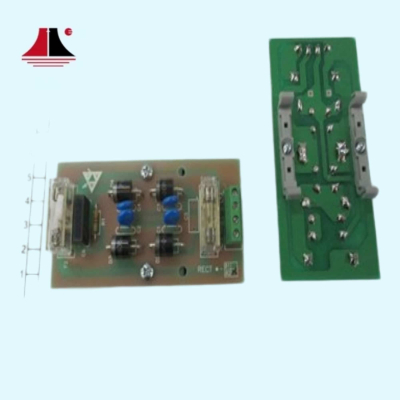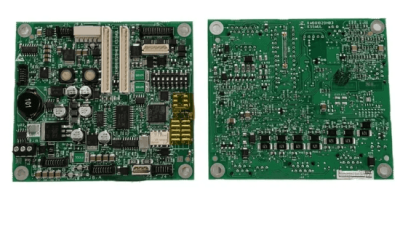Does a Bigger Elevator Shaft Mean a Bigger Elevator Car?
Many homeowners assume that enlarging their elevator shaft automatically gives them a proportionally larger cabin. This misconception can lead to frustration—and wasted building space—when the installed elevator car ends up smaller than expected.
Short answer: While a larger shaft provides more room, the actual elevator car size depends on safety clearances, machinery placement, door configurations, and accessibility requirements. Simply increasing shaft dimensions won’t guarantee a much larger car unless these factors are addressed.
In the sections that follow, we’ll explain how the shaft and cabin interact, highlight the main influences on car dimensions, and share practical tips for maximizing usable cabin space. By the end, you’ll know how to plan your shaft—and why FUJITA’s tailored elevator solutions deliver the best cabin fit for any hoistway.
Shaft versus Car: The Fundamental Difference
The Elevator Shaft
The shaft—often called the hoistway—is the vertical enclosure that houses the moving cabin, guide rails, ropes or belts, buffers, and safety systems. Think of it as the “garage” in which your elevator car travels. Its walls must be reinforced to support dynamic loads and provide space for machinery and emergency access.
The Elevator Car
The car (or cabin) is the passenger platform that moves inside the shaft. Its dimensions determine how many people can ride comfortably, whether a wheelchair fits, and how much luggage or groceries you can carry. The car must always be smaller than the shaft to make room for guide rails, safety gear, and mechanical clearances.
Mandatory Safety Clearances and Regulations
Elevator installations must meet strict safety standards. These rules ensure that nothing pinches or jams, that rescue personnel can access the shaft in emergencies, and that the mechanical parts have room to operate smoothly. While exact measurements vary by region, the general principle is clear:
Side Rooms: Space alongside the car for guide rails and moving cables or belts.
Back Room: Room behind the car for wiring, hydraulic lines, or traction machinery.
Top and Bottom: Overhead space for shock absorbers and pit depth for buffers.
These clearances are non‐negotiable. They guarantee safe, reliable operation and protect both passengers and service technicians. As a result, even if your shaft grows, the cabin footprint will always be limited by these safety margins.
Factors That Influence Cabin Size
Beyond basic clearances, several design and planning decisions determine your usable cabin area:
Door Type and Configuration
Center‐Opening Doors: Slide apart symmetrically, often requiring less wall space but slightly reducing cabin width.
Side‐Opening Doors: Generally offer a wider entrance at the expense of longer door tracks, which can reduce cabin depth if the shaft is narrow.
Telescopic Doors: Multi‐panel sliding doors that require minimal side clearance, maximizing the car’s interior space.
Choosing the right door style can add centimetres of usable cabin width or depth—enough to make a big difference in comfort and accessibility.
Machine‐Room versus Machine‐Room‐Less (MRL)
Traditional Machine Room: A separate space above the shaft houses the motor, gearbox, and control panels. This configuration frees the shaft footprint for the car but demands extra building area.
MRL Designs: Integrate the motor and controls into the shaft crown, eliminating the need for a distinct machine room. While MRL systems save external space, they require extra overhead within the shaft, which can slightly reduce the car’s top clearance.
MRL solutions are popular in modern homes because they reclaim floor space for living areas.
Load Capacity and Accessibility Requirements
Passenger Loads: A cabin designed for two people needs far less space than one meant for four or a wheelchair and attendant.
Wheelchair Accessibility: Regulatory guidelines often require a minimum cabin depth and width to accommodate a standard wheelchair, as well as grab bars and non‐slip flooring.
Service Loads: In some homes, the elevator carries heavy items—furniture, gardening equipment, or groceries—necessitating a sturdier floor and extra room.
Balancing these needs with your shaft size ensures that you get a cabin that truly fits your lifestyle.
Strategies to Maximize Cabin Space
Even in a modest shaft, thoughtful engineering can create a surprisingly spacious cabin:
Slim‐Profile Guide Rails and Ropes
Modern guide rails can be as narrow as a few centimetres, and high-strength synthetic belts replace thicker steel cables. These innovations reduce the side clearances you need, freeing up extra centimetres for the cabin.
Transparent or Reflective Cabin Walls
Glass, polycarbonate, or mirrored surfaces create an illusion of space without altering the car’s footprint. A clear cabin feels larger, brighter, and more inviting.
Recessed Fixtures and Flush‐Mount Controls
By embedding handrails, buttons, and intercom panels into the cabin walls, you reclaim valuable floor area. Every centimetre counts in a compact cabin.
Fold‐Up Seating
A foldable bench or seat can provide resting space when you need it, without permanently occupying cabin floor area.
Customized Interior Layouts
FUJITA offers bespoke cabin designs—including corner‐mounted handrails, built-in luggage racks, and multi‐panel lighting—that maximize usability and comfort.
Planning Your Shaft and Cabin Together
To ensure you get the largest possible cabin for your shaft:
Measure Early: Determine your shaft’s exact internal dimensions before finalizing cabin plans.
Account for All Clearances: Include space for rails, emergency access panels, buffers, and overhead machinery (or MRL overhead).
Choose the Right Door Style: Match door type to your shaft’s width and the cabin’s intended use.
Select an MRL System If Space Is Tight: Free up floor or ceiling areas in adjacent rooms for a more open feel.
Consult Experts: Work with FUJITA’s design team to explore slim‐profile components, cabin finishes, and layout options.
By coordinating shaft and cabin design from the start, you avoid surprises and make the most of every building metre.
Why FUJITA Delivers the Best Cabin Fit?
At FUJITA, we specialize in maximizing elevator cabin space in every shaft—large or small. Our custom engineering and global experience mean:
Precision Tolerances: Slim guide rails and optimized sheave designs reduce required clearances.
MRL Expertise: Integrated overhead machinery delivers full performance without a separate machine room.
Tailored Interiors: Glass, wood veneer, and recessed fixtures combine style with space efficiency.
Accessibility Solutions: We design cabins that meet or exceed local code requirements for wheelchair access and safety.
When you choose FUJITA, you partner with a team dedicated to turning your shaft’s potential into a comfortable, spacious cabin.
Conclusion
A larger elevator shaft sets the stage, but safety regulations, door configurations, machinery choices, and accessibility needs ultimately determine your cabin’s true dimensions. By understanding these factors and collaborating with FUJITA’s experts, you can achieve the most comfortable, efficient elevator car your shaft will allow.
Ready to optimize your elevator cabin? Contact FUJITA today for a complimentary design consultation. Let us show you how to unlock every millimetre of shaft space with our precision‐engineered elevator solutions.







